In the figure, the blocks A,B and C of mass m each have accelerations a1,a2 and a3 respectively. F1 and F2 are external forces of magnitude 2mg and mg respectively.
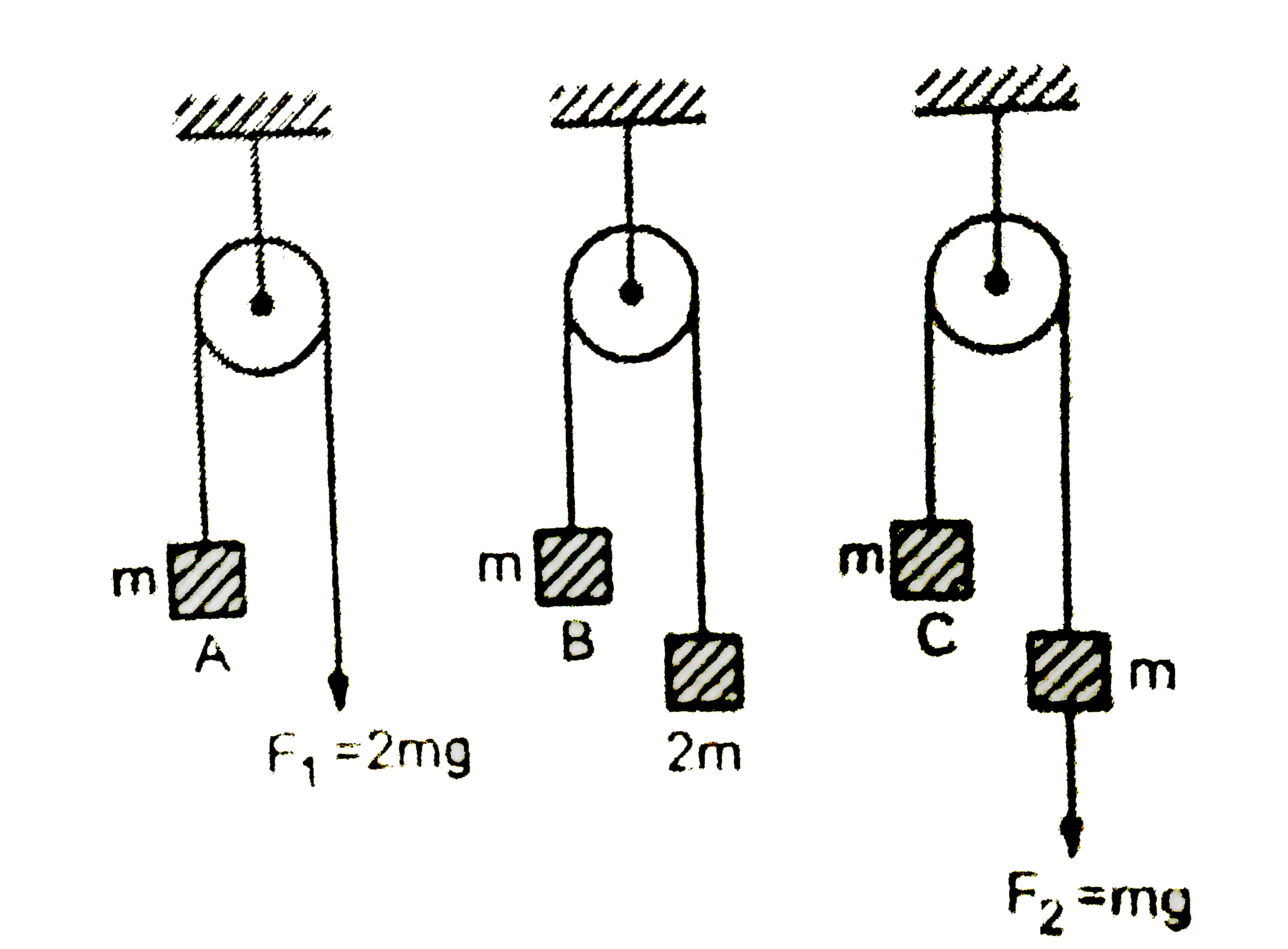
a1=a2=a3
a1>a2>a3
a1=a2,a2>a3
a1>a2,a2=a3
The correct Answer is:B

a1=2mg+mgm,a2=(2m−m)g2m+m,a3=0
a1=g,a2=g3
So, a1>a2>a3
Topper's Solved these Questions
- BOOK - PHYSICS WALLAHCHAPTER - LAWS OF MOTION EXERCISE - NEET PAST 5 YEARS QUESTIONS12videos
LAWS OF MOTION
- BOOK - PHYSICS WALLAHCHAPTER - LAWS OF MOTION EXERCISE - NEET PAST 5 YEARS QUESTIONS12videos
LAWS OF MOTION
- BOOK - PHYSICS WALLAHCHAPTER - KINETIC THEORY EXERCISE - NEET PAST 5 YEARS QUESTIONS11videos
KINETIC THEORY
- BOOK - PHYSICS WALLAHCHAPTER - MAGNETISM AND MATTER EXERCISE - NEET PAST 5 YEARS QUESTIONS10videos
MAGNETISM AND MATTER
Similar Questions
Knowledge Check
- Question 1 - Select One
In the figure, the blocks A,B and C of mass m each have accelerations a1,a2 and a3 respectively. F1 and F2 are external forces of magnitude 2mg and mg respectively.
 Aa1=a2=a3Ba1>a2>a3Ca1=a2,a2>a3Da1>a2,a2=a3
Aa1=a2=a3Ba1>a2>a3Ca1=a2,a2>a3Da1>a2,a2=a3 - Question 2 - Select One or More
In fig the blocks A,B,and C of mass m each have acceleration a1,a2,anda3, repectively. F1andF2 are external force of magnitude 2mgandmg, respectively. Then
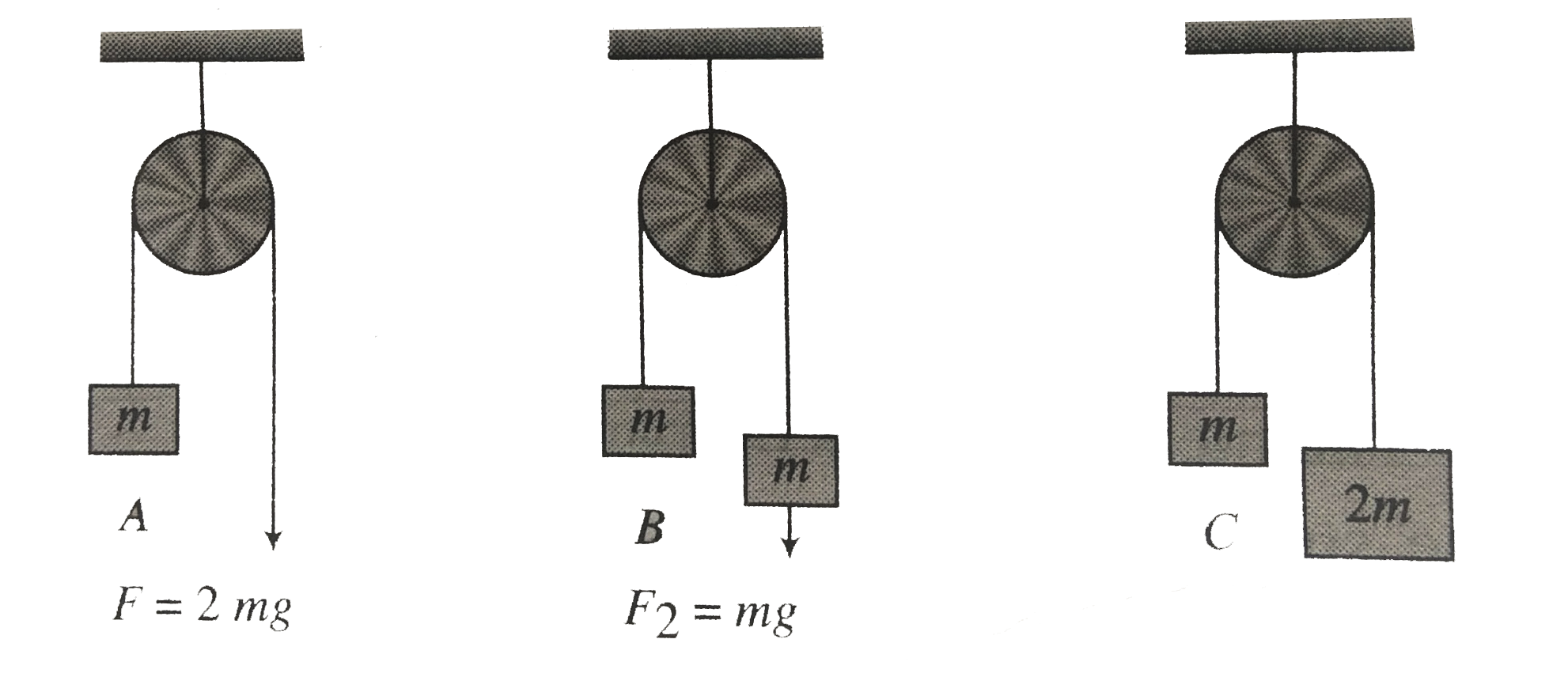 Aa1≠a2≠a3Ba1=a2≠a3Ca1>a2>a3Da1≠a2=a3
Aa1≠a2≠a3Ba1=a2≠a3Ca1>a2>a3Da1≠a2=a3 - Question 3 - Select One
In the figure the block A,B and C of mass m each, have acceleration a1,a2&a3 respectively. F1&F2 are external forces of magnitude 2 mg and mg respectively :
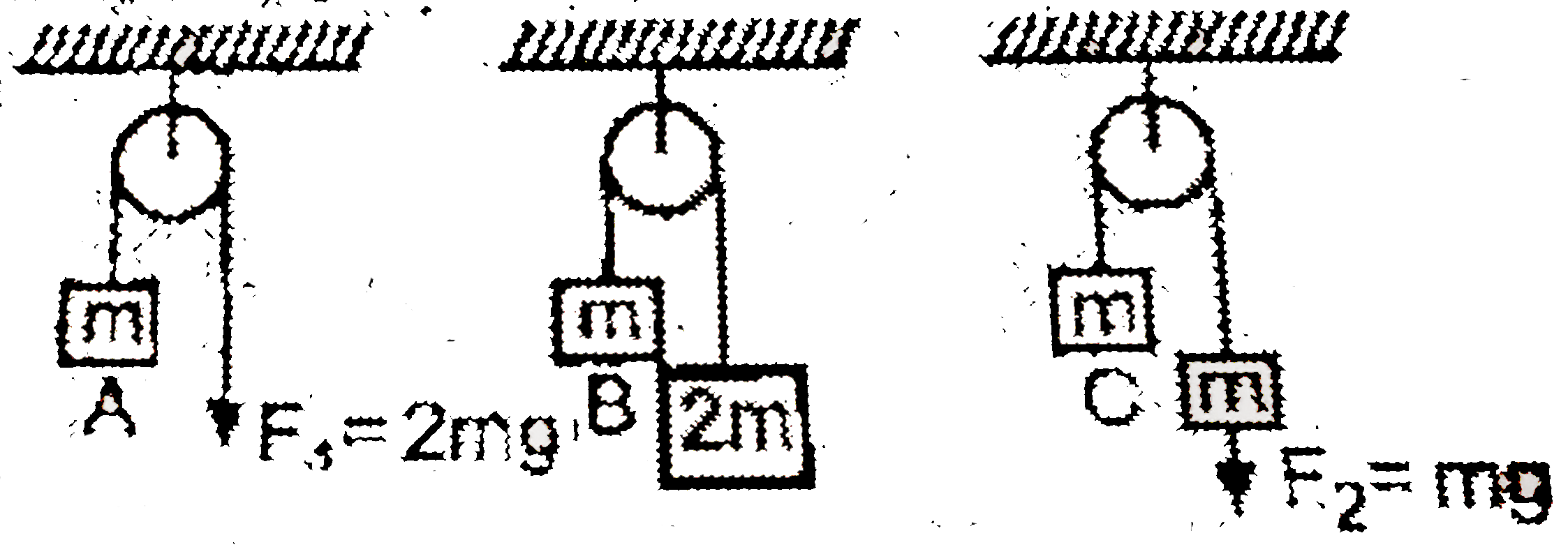 Aa1>a3>a2Ba1=a2,a2=a3Ca1=a2=a3Da1>a2,a2=a3
Aa1>a3>a2Ba1=a2,a2=a3Ca1=a2=a3Da1>a2,a2=a3
In the figure, blocks A, B and C of mass m each have acceleration a1, a2 and a3 respectively. F1 and F2 are external forces of magnitudes 2mg and mg respectively, then :
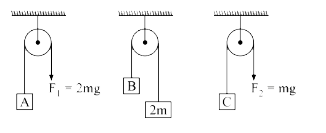 View Solution
View SolutionIn the adjacent figure, all the pulleys are frictioniess and massless, all the stringes are also massless. The relation between a1,a2 and a3 is (where a1,a2 and a3 are the acceleration of masses m1,m2 and m3 respectively in the direction as shown in the figure)
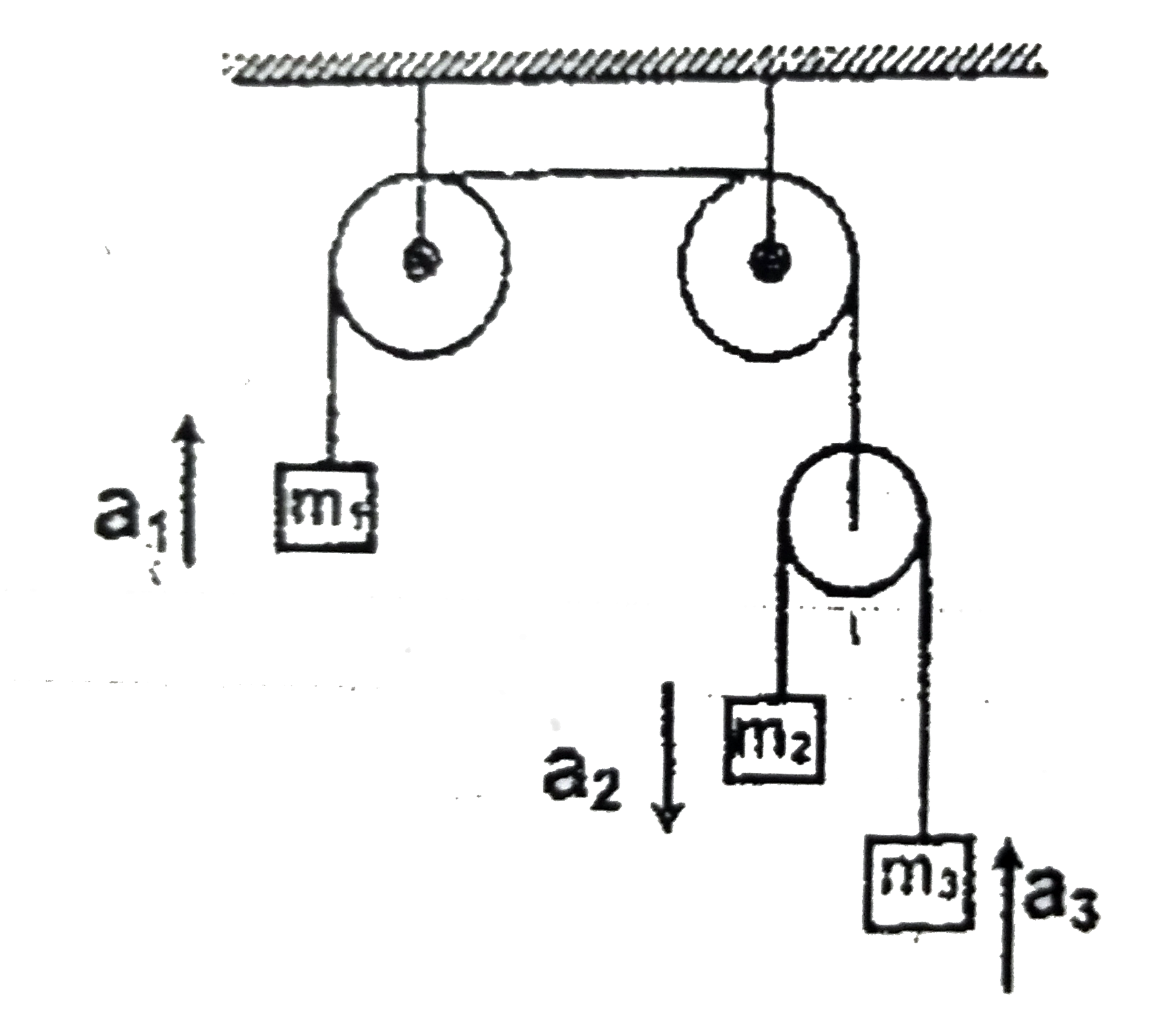 View Solution
View SolutionIf the blocks are moving as shown in the figure the relation between a1 , a2 and a3 will be.
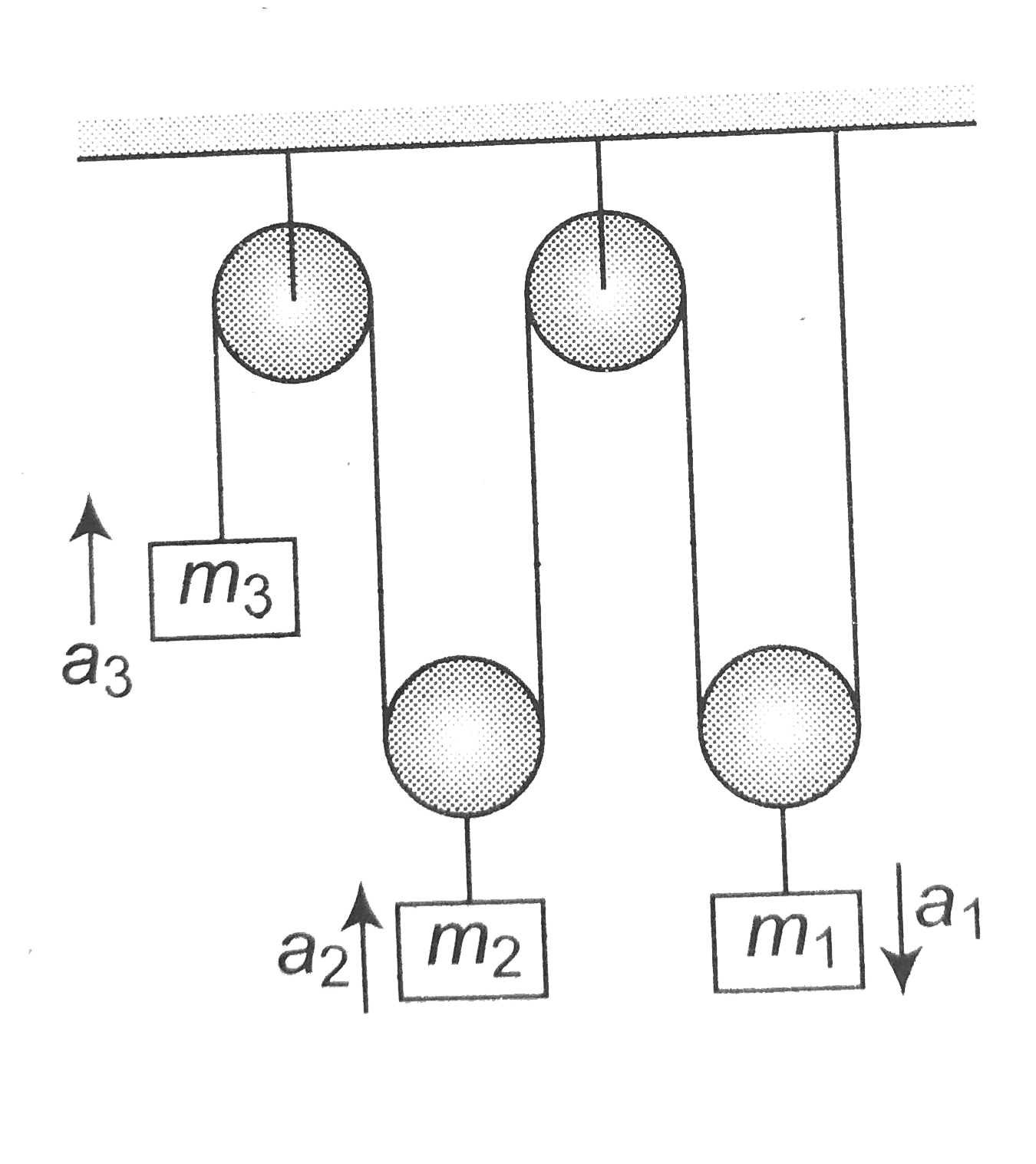 View Solution
View SolutionThree rectangles A1,A2 and A3 have the same area Their lengths a1,a2 and a3 respectively are such that a1<a2<a3. Cylinders C1,C2 and C3 are formed from A1,A2 and A3 respectively by joining the parallel sides along the breadth. Then,
 View Solution
View SolutionIf pulleys shown in the diagram are smooth and massless and a1 and a2 are acceleration of blocks of mass 4 kg and 8 kg respectively, then -
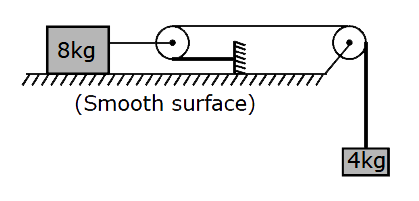 View Solution
View Solution



